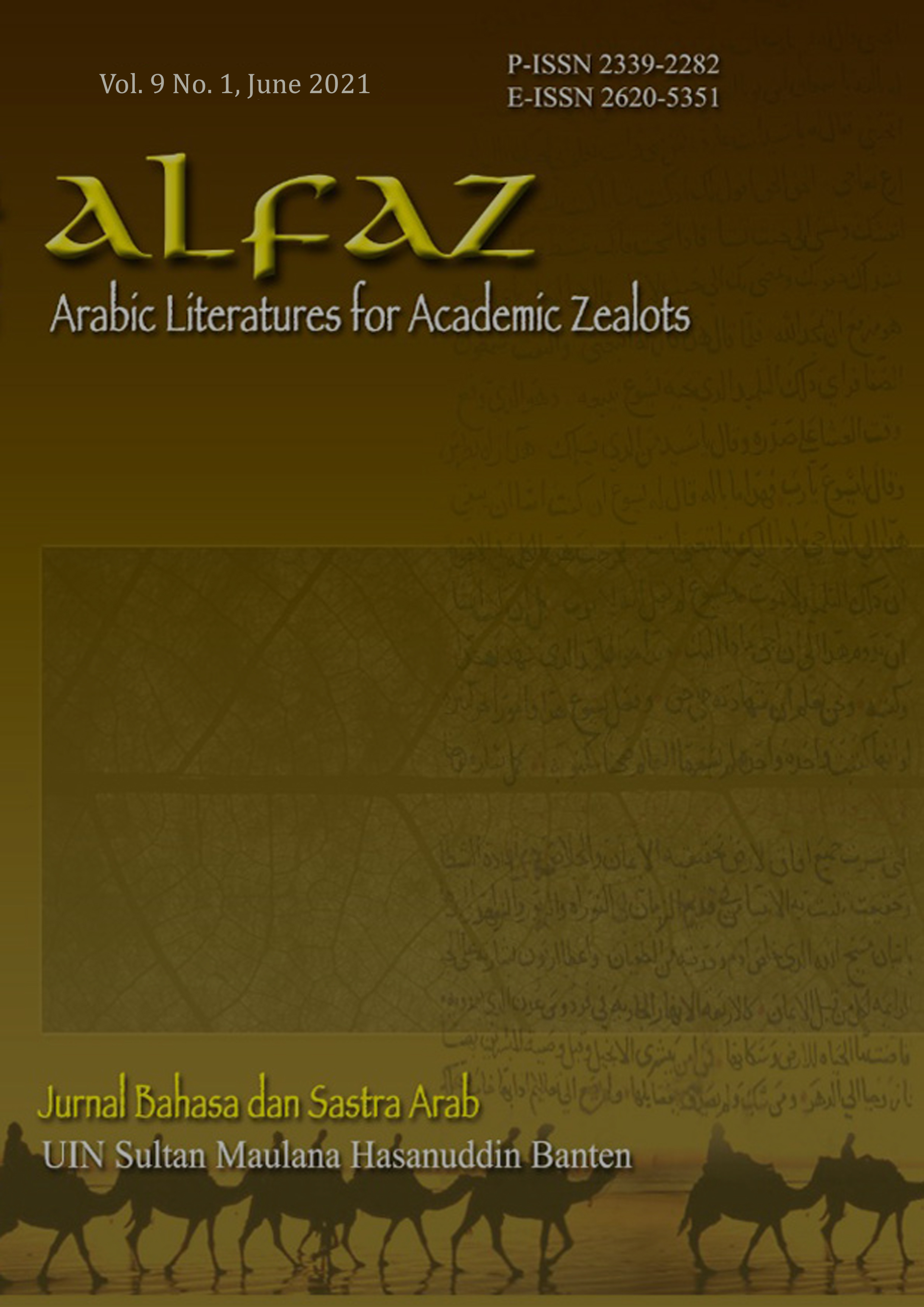Eksistensi Budaya Indonesia dalam Buku Ajar Materi Bahasa Arab Siswa SMP Islam Terpadu: Perspektif Pendidikan Multikultural
DOI:
https://doi.org/10.32678/alfaz.Vol9.Iss1.3789Abstract
Education, which is based on the integration of culture, is a key part of the learning process. The teaching material will always be part of the success of the teaching and learning process. School as an educational institution or institution is responsible for instilling multicultural education in students from an early age, which will give birth to a multi-cultural generation, so that the concept of multicultural education is very much in line with that applied in the world of education in Indonesia. The current study therefore looked at culture as a measuring instrument for the application of multiculturalism, and further explained the existence of Indonesian culture in Arabic teaching materials for grade VIII at junior high school. The method used in this research is qualitatively descriptive through the use of library research and content analysis. The aim of this study is to provide an overview of the integration of Indonesian culture in Arabic textbooks at junior high school. It also seeks to look at the values of cultural diversity that are embedded in students' attitudes towards multi-cultural education, such as respect for tolerance, fairness, democracy and respect for differences. The results of this study have placed a great deal of emphasis on the achievement of cultural competence, such as the integration of multicultural educational values at the visual level, images, people's names, places, and so on. However, the placement of cultural values that are substantive does not have enough place in the Arabic textbook.
Keywords: Cultural Existence, Arabic Textbooks, Multicultural Education
Downloads
References
Buku Panduan Bahasa Arab Tingkat Sekolah Menengah Pertama, Kelas VIII, Visi semesta (Vista School Network, School Development Partnership)
Hamid, Muhammad Abdul, dkk. Pengembangan Bahan Ajar Bahasa Arab Berbasis Teori Belajar Konstruktivisme Untuk Mahasiswa, Universitas Islam Negeri Maulana Malik Ibrahim, Malang,Arabi:Journal of Arabic Studies, 4 (1), 2019
Ibrahim, Rustam. Pendidikan Multikultural:Pengertian, Prinsip, dan Relevansinya dengan Tujuan Pendidikan Islam, Universitas Nahdlatul Ulama, Surakarta. Jurnal ADDIN, Vol. 7 No. 1 Februari, 2013
Jaeni, Muhammad. Nilai-Nilai Multikulturalisme dalam Bahasa Arab, Pusat penelitian dan pengabdian pada masyarakat (P3M), Sekolah Tinggi Agama Islam Negeri (STAIN) Pekalongan, 2016
Kamus Arab Indonesia Al-Maany. Aplikasi Android. 2020.
Kamus Besar Bahasa Indonesia (KBBI) versi online. Diakses 20 Desember 2020 dari https://kbbi.web.id/eksistensi
Majid, Abdul. Perencanaan Pembelajaran: Mengembangkan Standar Kompetensi Guru, Bandung: Remaja Rosdakarya, cet. 5, 2008
Nahak, Hildigardis. Upaya Melestarikan Budaya Indonesia di Era Globalisasi, Fakultas Ilmu Sosial dan Ilmu Politik, Universitas Nusa Cendana, Kupang, Jurnal Sosiologi Nusantara Vol. 5 No. 1, 2019
Ramah, Sutri dan Rohman, Miftahur. Analisis Buku Ajar Bahasa Arab Madrasah Aliyah Kurikulum 2013, Arabiyatuna:Jurnal Bahasa Arab, Vol. 2 No. 2, 2018
Rika, Neneng dan Kholidah, Jazilatul. Eksistensi Budaya Lokal Sebagai Penguat Nasionalisme (The Existence Of A Local Culture As Strengthener Nationalism), 2019, 168–74.
Sugirin dan Sudartini, Siti. ‘Pengintegrasian Aspek Multikultur Dalam Buku Teks Bahasa Inggris’, 2008.
Suparno dkk. Mempertahankan Eksistensi Budaya Lokal Nusantara Ditengah Arus Globalisasi Melalui Pelestarian Tradisi Gawai Dayak Sintang, STKIP Persada Khatulistiwa Sintang, Jurnal PEKAN Vol. 3 No. 1, April, 2018
Wicaksono, Juniaris Agung. ‘Konsep Pendidikan Multikultural Dalam Kebijakan Publik’, An-Nuha: Jurnal Kajian Islam, Pendidikan, Budaya & Sosial, 3.1 (2016) <http://ejournal.staimadiun.ac.id/index.php/annuha/article/view/67>.
Widasmara, Slasi. Aspek Multikultural Dalam Buku Teks Bahasa Indonesia Untuk Siswa SMP, Universitas Negeri Yogyakarta, 2012
Downloads
Published
Issue
Section
License
Authors retain copyright and grant the journal right of first publication with the work simultaneously licensed under a CC BY NC SA License that allows others to share the work with an acknowledgement of the work's authorship and initial publication in this journal.







